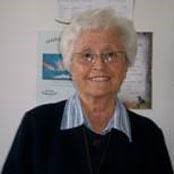
Parashat Bo
♦
Parashat Bo
Marie André Mitchell
9 January 2019
The Torah portion for this week commemorates a truly great event, the Exodus- the central theme of Judaism. Parashat Bo is an example of the blending of story, law and ritual. The narrative of the “last three plagues, the commitment to sanction the New Moon (thus laying the basis of the Jewish calendar), the laws of Passover and the sanctification of the first-born come in quick succession” (Stone p 340n).
The plagues, wonders, marvels or ‘blows’ as Fox prefers to call them escalate the struggle between Pharaoh and the LORD who demands freedom for enslaved Israel. Pharaoh is caught in the web of his own denial. Having silenced the voice of conscience long enough, he truly lost the ability to hear it. The Talmudic sage Resh Lakish is quoted as saying ”When God warns someone once, twice, and even a third time and that person does not respond, then and then only does God close the person’s heart against repentance and exact punishment for his sins.” Many may find this a hard saying, but although the Torah may find it necessary to emphasize the Exodus as God’s triumph over the forces of tyranny and idolatry, later texts will portray God as grieving for the Egyptians who are also God’s children and suffer because of Pharaoh’s stubbornness” (Etz Hayim p 371n).
The ninth plague is one of three days of darkness. How it is brought about is not stated; it is left to the imagination of the hearer. “People could not see one another, and for three days no one could move about; but all the Israelites enjoyed light in their dwellings” (10:23). It was a powerful symbolic attack on the Egyptian sun-god Re. The sign implicitly presented the God of Israel as stronger than the god of the Egyptians. Ramban comments that the darkness was an opaque, fog-light condition that extinguished all flames, so that the Egyptians could not even use lamps (Stone 158n). A Midrash calls the plagues of darkness “the darkness of Hell/ Gehinnom” (Exodus Rabbah 14:2) and it connects the darkness that afflicted Egypt with that of the primordial darkness that existed before the world was created (Gen.1:2). Human life is impossible without light. ”Just as the light of Shabbat is a foretaste of the world to come – the reward that awaits the righteous, the darkness of the ninth plague, is a foretaste of gehinnom, the punishment that awaits those who cannot truly see their neighbours, who cannot feel the pain and recognize the dignity of their addicted brothers and sisters. The worst result of this darkness is that people could not see one another” (Etz Hayim, p. 376n).
Paul Korandiyarkunnel is his commentary on Parashat Bo (2004) says “This is also the darkness that we, also, could be in when we are unable to see the other. Is this due to the presence of the ‘pharaoh’ in us, the pharaoh of pleasure, power, selfishness addition, nepotism consumerism, insensitivity…? Are we able to relate respond and communicate to the other in a meaningful and effective manner? Otherwise, it is here that we need the intervention and ‘signs’ of the LORD in our lives.
For Reflection and Discussion: [1] Where do you see ‘pharaoh ‘in our world today? Discuss. [2] Darkness can be frightening in many ways, not only to children. How do you overcome it?
Bibliography: Lieber Etz Hayim Torah and Commentary JPS 2001; Plaut, The Torah a Modern Commentary URJ Press NY 2018; Stone Chumash Mesorah publications NY 2003

This week’s teaching commentary is by
Marie André Mitchell SNDdeN, Mth,
Johannesburg South Africa
Bat Kol alum 2001-02, ’04, ’06, ’08, ’09, ’10, ’11, ’15
PLEASE NOTE: The weekly Parashah commentaries represent the research and creative thought of their authors, and are meant to stimulate deeper thinking about the meaning of the Scriptures. While they draw upon the study methods and sources employed by the ISPS-Ratisbonne, the views and conclusions expressed in these commentaries are solely those of their authors, and do not necessarily represent the views of ISPS-Ratisbonne. The commentaries, along with all materials published on the ISPS-Ratisbonne website, are copyrighted by the writers, and are made available for personal and group study, and local church purposes. Permission needed for other purposes. Questions, comments and feedback are always welcome.
Share this with your friends
Institute Saint Pierre de Sion – Ratisbonne – Christian Center for Jewish Studies
Congregation of the Religious of Our Lady of Sion
Contact us:
secretary@ratisbonne.org.il
26 Shmuel Ha-Naguid Street – Jerusalem
Subscribe to Newsletter

No responses yet